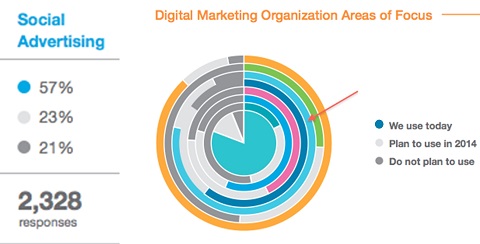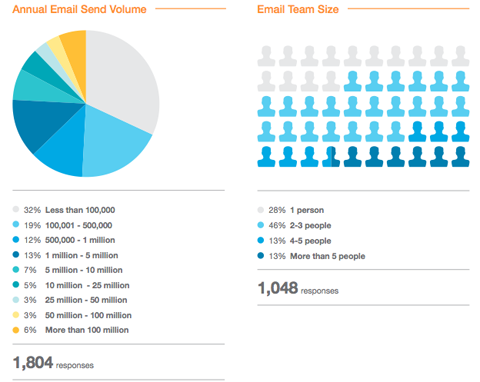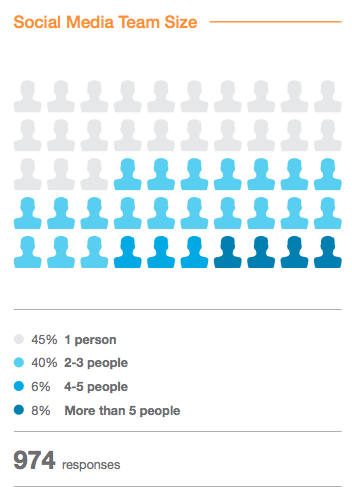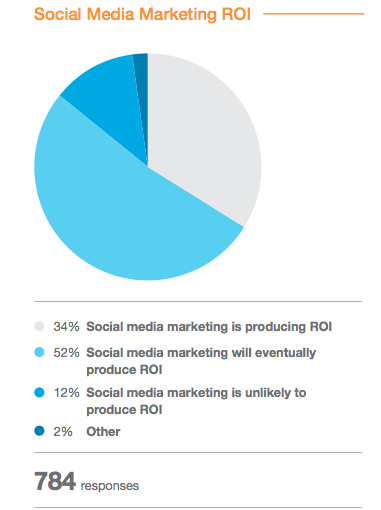 Want to know where social marketers are focusing in 2014?
Want to know where social marketers are focusing in 2014?
Looking for the latest social media trends to inform your marketing?
Based on new research, here are five areas you should start paying attention to right away.
Note: This article is based on Exact Target's 2014 State of Marketing Report, which shows top marketing objectives, priorities and concerns for 2014.
#1: Social Listening Becoming Important
More brands are beginning to really listen to their customers.
According to the report, 60% of marketers were using social listening strategies in 2013 and 24% plan to do so in 2014. The sad news is that only 31% of marketers think their social listening is fully effective.

Key Takeaways
Social listening offers opportunities to interact directly with consumers. But it's not just about setting up a HootSuite account and watching tweets that mention your brand's name.
If you really want to see results, you need to listen and respond strategically, according to another study by JD Power:
- Don't just listen; understand first—are you hearing one loud voice or a growing trend? Is positive sentiment due to great advertising or an awesome product? Understand the full picture before you respond.
- Consider the context of online updates and conversations—are consumers reaching out to you directly or venting to their friends? It's their context (not yours) that matters. Your response should fulfill their expectations.
- Engage with the intention of delivering mutual value—consumers have shown they're willing to give up some level of privacy in exchange for better service and incredible value.
- Demonstrate how listening builds relationships, rather than simply “intruding” on consumers' conversations. People are still sensitive about privacy and listening for listening's sake is simply creepy.
#2: 57% of Marketers Use Social Advertising
The lure of social advertising is fascinating. Facebook, Twitter, LinkedIn and others are daily destinations for millions of U.S. consumers who spend an average of 37 minutes per day on those channels.
No wonder 57% of marketers used social ads in 2013 and another 23% are expected to start using ads in 2014. But again, only 23% of digital marketers find their social advertising efforts effective.

Key Takeaways
The problem for marketers is that social ad options are very confusing. What's the difference between a Facebook promoted post and a Facebook sponsored story? When should you promote a check-in story? And do social ads even work?
Get World-Class Marketing Training — All Year Long!
Are you facing doubt, uncertainty, or overwhelm? The Social Media Marketing Society can help.
Each month, you’ll receive training from trusted marketing experts, covering everything from AI to organic social marketing. When you join, you’ll also get immediate access to:
- A library of 100+ marketing trainings
- A community of like-minded marketers
- Monthly online community meetups
- Relevant news and trends updates
These are some of the questions that make social advertising very tricky. But don't be caught flat-footed when what used to work starts failing. Educate yourself and learn the most effective ways to leverage social ads in the current market. Here's a simple plan to get started with social ads:
- Establish measurable marketing goals.
- Set your budget (start small).
- Know your audience's needs.
- Pick the channel.
- Research different ad types (how they work, how to leverage them and how your audience will perceive them).
- Check out the competition.
- Optimize your landing pages.
- Experiment and create ad copy (two or three versions).
- Test and measure.
#3: Email and Social Integrate
You would think the widespread use of social media has made email obsolete. But email is alive and well, according to 68% of marketers who say email is core to their business. In fact, social media has made email even more powerful than ever. Take a look:

Key Takeaways
It's important to understand the relationship between email and social. With email marketing, you have the ability to stay top-of-mind with existing customers, which helps bring them back to your door. Then by encouraging your email subscribers to connect with you on Facebook or Twitter, their friends will see your brand on their news feed, thus generating more social visibility for you.

Discover Proven Marketing Strategies and Tips
Want to go even deeper with your marketing? Check out the Social Media Marketing Podcast! Publishing weekly since 2012, the Social Media Marketing Podcast helps you navigate the constantly changing marketing jungle, with expert interviews from marketing pros.
But don’t let the name fool you. This show is about a lot more than just social media marketing. With over 600 episodes and millions of downloads each year, this show has been a trusted source for marketers for well over a decade.
On the other hand, you don't want to leave your social connections at the mercy of Facebook's arbitrary algorithms. You want them to receive your content straight to their email inbox, where you have more control and can extend those relationships.
Check out these tips to integrate your email and social media marketing. For Facebook and email integration, here are some more nifty tips (courtesy of Convince & Convert):
- Use email subject line testing to optimize Facebook ad headlines and vice versa.
- Incorporate your most popular email content into status updates (and vice versa).
- Test image effectiveness via email and incorporate into status updates (and vice versa).
- Just like sponsored stories, incorporate your fans' enthusiasm for your brand into your email content.
- And finally, tease upcoming emails via a Facebook status update.
#4: Assemble Your Social Media Dream Team
The survey found that social media teams are becoming more common, with 57% of respondents having a dedicated team to strategize, execute and steward social media initiatives. Typically a social media team has three people or fewer.

Key Takeaways
Most brands understand that having a dedicated team is key to social marketing success. It's also clear that one-person social media “teams” are most common (probably due to small budgets or lack of buy-in from upper management).
Of course, having a social media team of more than one person would be great. But don't be discouraged if you don't have the budget to make it happen. There are always things you can do to create social media success. However, you also have to adjust your expectations to match the level of investment in your budget and team. Here are some basic tips if you're a one-person show:
- Start with a strategy. Know what you want to accomplish from social media and choose your social networks wisely.
- Create a workflow process. Schedule some time each day for routine social media activities (e.g., listening and monitoring, posting updates, networking and so on). The more you repeat these tasks, the better you'll get at it.
- Develop quality content. You'll need to create original content on a regular basis (e.g., blog posts, images, videos, graphics, etc.). Even with a small budget, you can get other people to create high-quality content for you by using a service like Fiverr. You can also get free images from Flickr or Wikimedia Commons.
- Get the word out. Let your co-workers and customers know that you have a Facebook page or a Twitter profile. Encourage them to engage with the company on these channels. It's also a good idea to join an online community where you can tactfully get the word out to others (without spamming them). The more value you add to their conversations, the more receptive they will be to discovering and engaging with your online brand.
#5: Social Media ROI Remains Elusive
While marketers are dedicating more time and resources to social, they're not 100% sure how effective it is in terms of ROI. Thirty-four percent believe they're currently seeing ROI, while 52% believe their social media efforts will eventually produce ROI. This is not good.

Key Takeaways
Many business owners make the mistake of not measuring social media ROI. Know this—As long as you're not measuring, you will never understand how social media marketing can benefit your business.
Measuring helps you to be intentional about your marketing activities instead of spending time and resources on useless tactics that don't work.
Start by defining clear, measurable social media goals such as brand awareness (e.g., Facebook likes), lead generation (e.g., email opt-ins or content downloads) or customer retention (compare cost of retaining a social media customer vs. a non–social media customer). Then develop a content strategy to achieve those goals (remember that content drives social). Focus on one or two social channels where your target audience hangs out and gradually scale as your audience and your resources grow! Soon you'll be counted among the 34% who are seeing ROI on their social media efforts.
What do think? Which of these social strategies will you be looking to improve this coming year? Please leave your thoughts and comments below.
Images from iStockPhoto.
Attention Agency Owners, Brand Marketers, and Consultants

Introducing the Marketing Agency Show–our newest podcast designed to explore the struggles of agency marketers.
Join show host and agency owner, Brooke Sellas, as she interviews agency marketers and digs deep into their biggest challenges. Explore topics like navigating rough economic times, leveraging AI, service diversification, client acquisition, and much more.
Just pull up your favorite podcast app, search for Marketing Agency Show and start listening. Or click the button below for more information.

